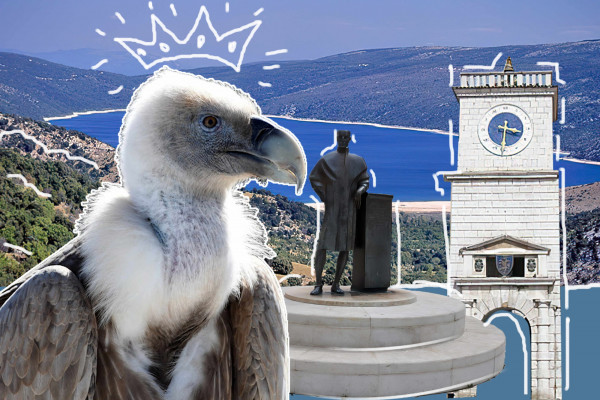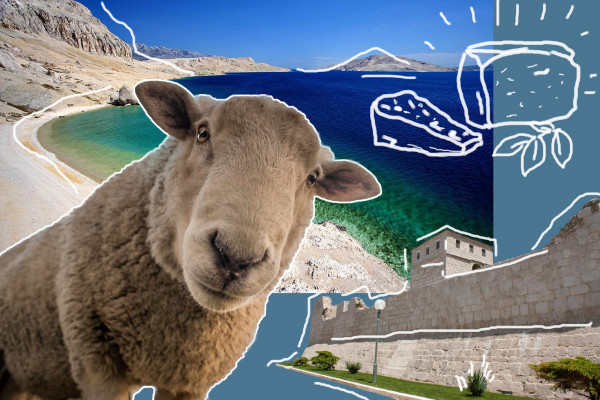Show all photos
A Guide for a One Day Trip to Zagreb
In recent years, the city of Zagreb has become the number one tourist destination in continental Croatia. As the capital of Croatia and with more than 900 years of history, Zagreb really offers a handful of interesting attractions and stories to every visitor. What is the best way to experience Zagreb in just one day? Read below.
1. Ban Josip Jelacic Square - Ban Josip Jelacic Square is the main city square and the central gathering place for citizens and a place where various events take place such as concerts, ethno festivals, fairs of local products and the like. In the middle of the square is a statue of Josip Jelacic, the work of sculptor Dominik Fernkorn. Not far from the statue is the Mandusevac fountain, which legend says will fulfill your wish if you throw a coin in it. In addition to the statue and fountain, beautiful historic facades capture the attention of every visitor.
2. Zagreb Cathedral - Zagreb Cathedral is one of the most recognizable symbols of the city. The Zagreb diocese and cathedral were founded in 1094 by King Ladislav. Today's appearance of the cathedral is due to the neo-Gothic restoration after the earthquake of 1880. In the interior and the treasury, there are numerous relics, works of art and graves of important personalities from Croatian history.
3. Funicular - Zagreb's funicular is a special experience for visitors. For a small fee you can ride to the Upper Town and enjoy the romantic view of the city in the smallest and shortest cable car of its kind in the world, which is also a cultural monument.
4. Strossmayer Promenade - Strossmayer Promenade is a promenade in the city center that connects several archaeological, cultural, historical sites in the Upper Town. A statue of the poet Antun Gustav Matos looking at the roofs of the Lower Town has been erected in an avenue of old chestnut trees. With a beautiful view of the city, a promenade is often a place for cultural and entertainment events.
5. La Struk - La Struk is a cult place on the Zagreb gastro scene that has delighted the public with various types of traditional Croatian dish - Strukli. In La Struk, in addition to the classic Strukli with cheese, you can try a variety of varieties: from Strukli with pumpkin oil and seeds to Strukli with blueberries. Coming to Zagreb and not trying Strukli is like not being in Zagreb at all.
6. Tuskanac Park - There are as many as 17 forest parks in the city of Zagreb, and one of the most beautiful and closest to the city center is the magnificent Tuskanac. It is enough to turn from the busy Ilica into Dezmanov prolaz, then behind Saloon uphill to the left, and suddenly you are in the realm of forests and romantic trails. Instead of the noise of the tram, only birds can be heard, the busy streets have been replaced by the greenery of centuries-old trees, and your only company will be a few walkers. The forest area is surrounded by residential areas, quiet streets with some of the most beautiful Zagreb summer houses and villas from the early 20th century.
7. Chocolate Museum - The Chocolate Museum in Zagreb is a thematic museum dedicated to chocolate, its historical, geographical and cultural significance. Visitors are taken on an interactive journey through time and space, engaging all the senses - sight, smell, touch, sound and of course taste. The souvenir shop offers a variety of handmade premium chocolates.
8. Tkalciceva Street - Tkalciceva Street is the main center of Zagreb's cafes, restaurants and leisurely nightlife. Also known as Tkalca, it contains dozens of places where you will find something to your liking. A stream used to flow down the street, dividing Zagreb's two oldest settlements, Gradec and Kaptol. In the period from 1899 to 1941, almost every house in Tkalciceva Street was a brothel. Being in the center, all the windows had to have opaque glass and red lanterns. For this reason, Zagreb was the first city in Europe with a corresponding red light district.
9. Zagreb Cathedral - Zagreb Cathedral is one of the most recognizable symbols of the city. The Zagreb diocese and cathedral were founded in 1094 by King Ladislav. Today's appearance of the cathedral is due to the neo-Gothic restoration after the earthquake of 1880. In the interior and the treasury, there are numerous relics, works of art and graves of important personalities from Croatian history.
10. Croatian National Theater - This magnificent theater was inaugurated on October 14, 1895. The authors of this neo-Baroque architectural masterpiece are the famous architects Ferdinand Fellner and Herman Helmer. In front of the theater is the fountain Well of Life, designed in 1905 by the famous Croatian artist and sculptor Ivan Mestrovic.
Guide Type
Most popular
Itinerary
Place 2
Zagreb Cathedral
Place 2
Zagreb Cathedral
Zagreb Cathedral is one of the most recognizable symbols of the city. The Zagreb diocese and cathedral were founded in 1094 by King Ladislav. Today's appearance of the cathedral is due to the neo-Gothic restoration after the earthquake of 1880. In the interior and the treasury, there are numerous relics, works of art and graves of important personalities from Croatian history.
Place 3
Funicular
Place 3
Funicular
Zagreb's funicular is a special experience for visitors. For a small fee you can ride to the Upper Town and enjoy the romantic view of the city in the smallest and shortest cable car of its kind in the world, which is also a cultural monument.
Place 4
Strossmayer Promenade
Place 4
Strossmayer Promenade
Strossmayer Promenade is a promenade in the city center that connects several archaeological, cultural, historical sites in the Upper Town. A statue of the poet Antun Gustav Matos looking at the roofs of the Lower Town has been erected in an avenue of old chestnut trees. With a beautiful view of the city, a promenade is often a place for cultural and entertainment events.
Place 5
La Struk
Place 5
La Struk
La Struk is a cult place on the Zagreb gastro scene that has delighted the public with various types of traditional Croatian dish - Strukli. In La Struk, in addition to the classic Strukli with cheese, you can try a variety of varieties: from Strukli with pumpkin oil and seeds to Strukli with blueberries. Coming to Zagreb and not trying Strukli is like not being in Zagreb at all.
Place 7
Chocolate Museum
Place 7
Chocolate Museum
The Chocolate Museum in Zagreb is a thematic museum dedicated to chocolate, its historical, geographical and cultural significance. Visitors are taken on an interactive journey through time and space, engaging all the senses - sight, smell, touch, sound and of course taste. The souvenir shop offers a variety of handmade premium chocolates.
Place 9
Zagreb Cathedral
Place 9
Zagreb Cathedral
Zagreb Cathedral is one of the most recognizable symbols of the city. The Zagreb diocese and cathedral were founded in 1094 by King Ladislav. Today's appearance of the cathedral is due to the neo-Gothic restoration after the earthquake of 1880. In the interior and the treasury, there are numerous relics, works of art and graves of important personalities from Croatian history.
Place 10
Croatian National Theater
Place 10
Croatian National Theater
This magnificent theater was inaugurated on October 14, 1895. The authors of this neo-Baroque architectural masterpiece are the famous architects Ferdinand Fellner and Herman Helmer. In front of the theater is the fountain Well of Life, designed in 1905 by the famous Croatian artist and sculptor Ivan Mestrovic.
Guide Location
Traveler type
All types of travelers













